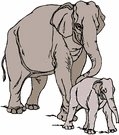
Worksheets and No Prep Teaching Resources
Reading Comprehension Worksheets
Animal Themes
Invertebrates
Oceans

Animal Themes
 Worksheets and No Prep Teaching Resources Reading Comprehension Worksheets Animal Themes Invertebrates Oceans |
 Animal Themes |
| edHelper's suggested reading level: | grades 5 to 6 | |
| Flesch-Kincaid grade level: | 6.12 |
| Sea Urchins |

|
 1 Sea urchins are like rolled-up hedgehogs. They have pointy spines. The spines project out of their globe-shaped bodies. The name "urchin" is an old name for the round, spiny hedgehog. Their needle-sharp spines are sea urchins' best line of defense. The spines are poisonous in some species.
1 Sea urchins are like rolled-up hedgehogs. They have pointy spines. The spines project out of their globe-shaped bodies. The name "urchin" is an old name for the round, spiny hedgehog. Their needle-sharp spines are sea urchins' best line of defense. The spines are poisonous in some species. |
Create Weekly Reading Books
Prepare for an entire week at once! |
| Leave your feedback on Sea Urchins (use this link if you found an error in the story) |
 |
Animal Themes
|
 |
Invertebrates
|
 |
Oceans
|
|
|